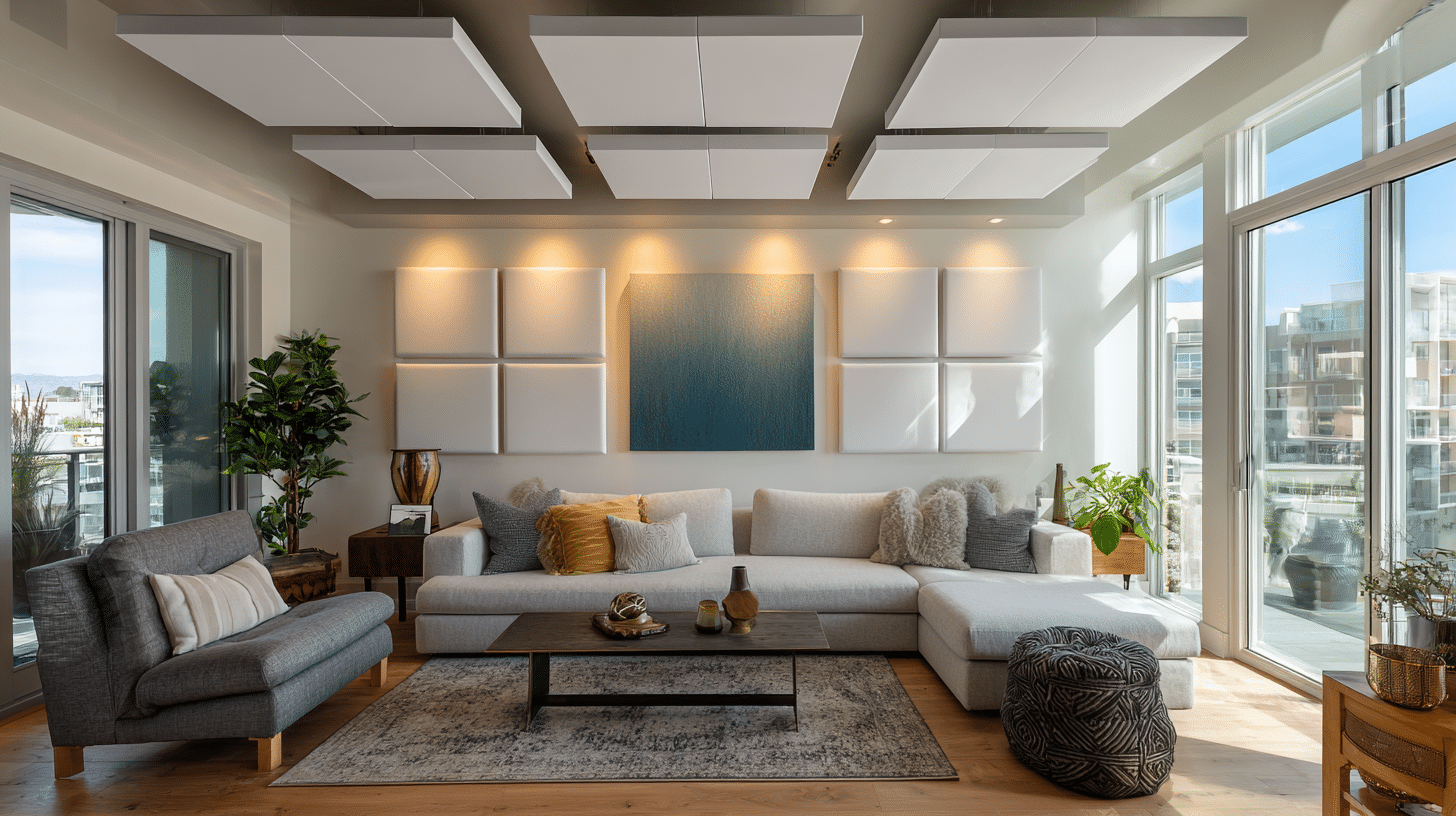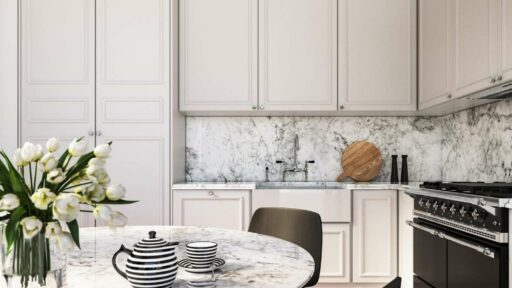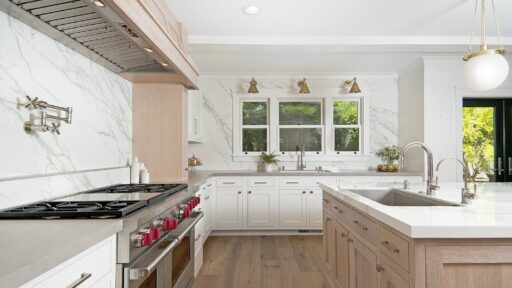Open-concept homes have become the heartbeat of modern design. They feel airy, bright, and endlessly inviting. Walls disappear, light travels freely, and people connect across spaces that blend kitchen, dining, and living areas into one. But with all that openness comes a challenge most homeowners don’t expect — managing sound.
Large, open spaces tend to echo. Hard surfaces like wood floors, tall ceilings, and big windows let sound bounce around, making conversations harder to follow and movie nights less immersive. That’s where design meets acoustics. Adding framed acoustic panels can make a dramatic difference. They soften echoes, balance the sound, and add a touch of style that turns a practical upgrade into an elegant design feature. Whether subtle or bold, these panels enhance both how your space feels and how it sounds.
Turning Sound Problems into Design Opportunities
Every home has its acoustic quirks. The beauty of modern interior design is that those quirks can become opportunities to create something truly personal.
Making Framed Acoustic Panels Part of Your Decor
Acoustic panels don’t have to look technical. The newest designs come framed, textured, and customizable. You can choose colors that complement your furniture or go for fabric prints that mimic fine art. Hang them in pairs or groups the way you would with a gallery wall. They can act as a statement piece — a beautiful centerpiece that also happens to make your living room quieter.
Think about texture. Woven fabrics, linen finishes, or even velvet can add depth and warmth. If you prefer a minimalist look, go for simple, neutral tones with clean frames. The best part is that you can DIY this project — stretching sound-absorbing fabric over wooden frames can be both affordable and rewarding.
Matching Acoustic Panels with Your Style
Every interior style offers a different way to embrace sound design. In Scandinavian spaces, soft grays and beige panels blend effortlessly with wood and natural light. For industrial or loft-style rooms, matte black frames and rougher textures bring a sophisticated edge. In a cozy, modern farmhouse, warm neutrals and linen finishes feel right at home.
The goal is harmony. Panels should feel like they belong — not as afterthoughts, but as intentional elements that tell part of your story. Choose what inspires you. The right mix of texture, color, and placement can make acoustic design completely invisible while still making your room sound perfectly calm.
Best Spots to Place Acoustic Panels
Placement matters just as much as design. Start by thinking about where sound travels most in your space. The wall behind your sofa or TV is a natural choice. It’s often the largest, flattest surface in the room — a perfect spot for panels to absorb reflections.
You can also install them in transition zones, like between the kitchen and living area, or even on the ceiling if your space has tall, echoing heights. The key is balance. A few well-placed panels can do more than cover every surface. They’ll reduce reverb, make voices clearer, and subtly shape how your living room sounds without changing how it looks.
Simple Additions That Make a Big Difference
You don’t have to rebuild your space to make it sound better. Sometimes the smallest updates bring the biggest comfort. Think of it as layering texture and warmth — the same things that make a room beautiful also make it quieter.
Use Soft Furniture and Textiles
Sound loves hard surfaces. It bounces off them like light off a mirror. The more fabric and softness you add, the more that echo fades away. Curtains, rugs, pillows, and upholstered furniture all absorb sound naturally. Thick drapes can quiet large windows, while a cozy area rug under your coffee table can stop sound from ricocheting off the floor.
Don’t underestimate the power of texture. A chunky knit throw, velvet cushions, or linen slipcovers all help calm the acoustics while making your living room feel inviting. Every soft surface counts. You’ll notice the difference not just in sound but in how relaxed the room feels overall.
Try Acoustic Lighting or Ceiling Features
Lighting can do more than illuminate — it can shape the way your room sounds. Modern designers now create pendant lamps and ceiling fixtures with built-in acoustic materials. They look sleek and absorb sound at the same time. These lights are perfect for open spaces where you can’t easily hang wall panels everywhere.
You can also use suspended ceiling elements to diffuse sound. Decorative baffles, fabric canopies, or even wooden slats add architectural interest while helping control echo. They turn functionality into art, creating depth and comfort overhead without taking away from the open feel of the space.
Planning a Cozy and Quiet Open Living Room
Designing an open-concept space that feels peaceful and quiet doesn’t mean giving up that lovely sense of openness. It’s all about balance. You want to keep the light, the air, and the flow — but soften the sound. The best spaces manage to feel both spacious and intimate at the same time. A calm acoustic atmosphere makes your home not just more functional, but more comfortable to live in every single day.
How to Check the Acoustics of Your Space
Before you start adding rugs or rearranging furniture, take a moment to simply listen to your room. Sound has its own personality, and every space behaves differently. Stand in the middle of your living room and clap your hands once. Listen carefully to what happens next. Does the echo bounce back sharply? Does it linger longer than you’d like? That quick test can tell you a lot.
Move around and try the same thing near a window or in a corner. Glass, concrete, and other hard materials tend to reflect sound, while soft fabrics absorb it. If you notice that the sound feels harsh or “rings” in your ears, your space probably needs some acoustic softening.
You can also use your everyday activities to test your acoustics. Turn on some music or have a casual conversation across the room. If voices sound hollow or get lost halfway through the space, that’s a clear sign your sound is scattering too much. Once you start paying attention, you’ll notice which areas feel too “bright” or too “empty.” Those are the perfect spots to treat first — a rug here, a curtain there, maybe a fabric wall hanging or framed panel where echoes are strongest.
Balancing Beauty and Comfort
A quiet room isn’t about removing sound — it’s about creating harmony. The goal is to design a space that feels calm, not silent. You want to walk in and immediately sense softness, warmth, and balance. Achieving that doesn’t take drastic changes, just thoughtful layers.
Start with texture. Add curtains that puddle slightly on the floor. Choose plush cushions and throw blankets that invite you to sink in. Mix different materials — linen, wool, velvet — each one catches sound differently and gives your room dimension. If your floors are bare, consider a thick rug or even two smaller ones layered together for depth and coziness.
Plants work beautifully too. Large leafy ones help break up sound reflections and bring life into the room. They’re natural, aesthetic, and great for both your ears and your eyes. Wall art and decorative shelves can do the same — they scatter sound gently and make the space feel fuller.
Don’t forget about color. It shapes how a space feels as much as how it looks. Warm, earthy tones — soft beige, olive, terracotta — bring a sense of comfort and grounding. Cool neutrals like pale gray or misty blue make the space feel open but serene. The key is balance. Too many hard, shiny surfaces will make a room feel loud and hollow; too many heavy textures might close it in. Blend both until your space feels like it breathes quietly.
When beauty and comfort work together, your open-concept living room transforms. It stops being just a design trend and becomes something deeply personal — a living, breathing place that looks inviting and sounds peaceful. A space that doesn’t just impress the eye, but soothes the mind every time you walk in.








